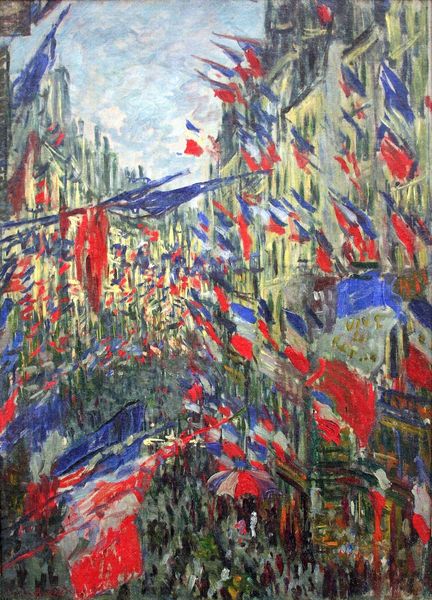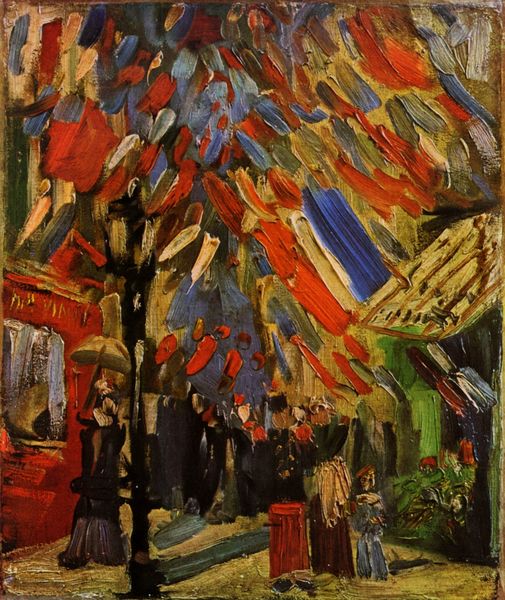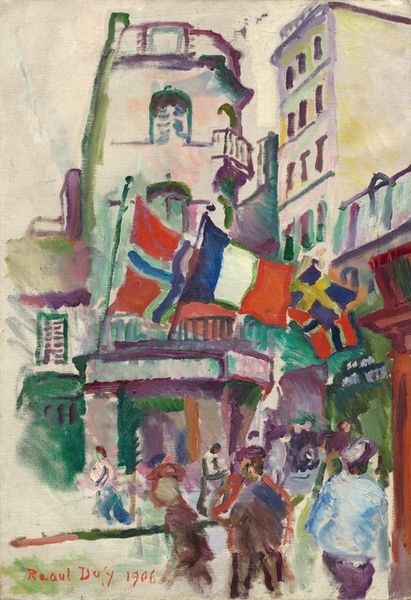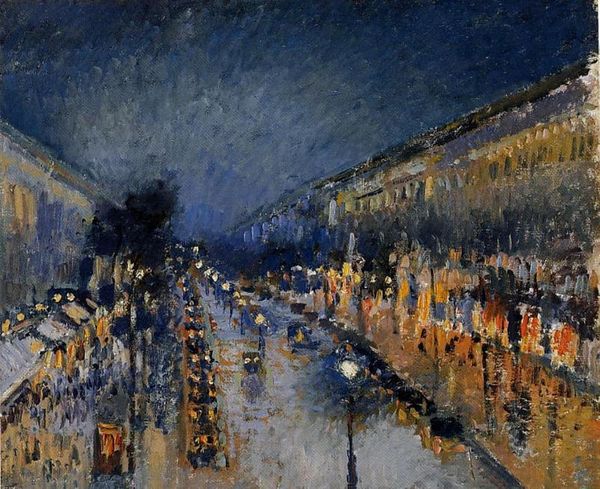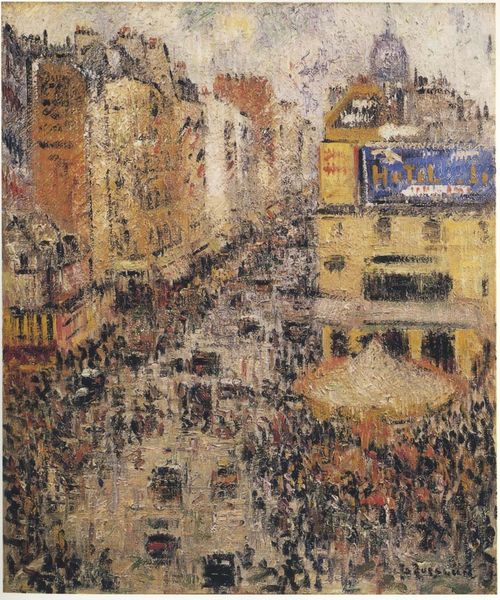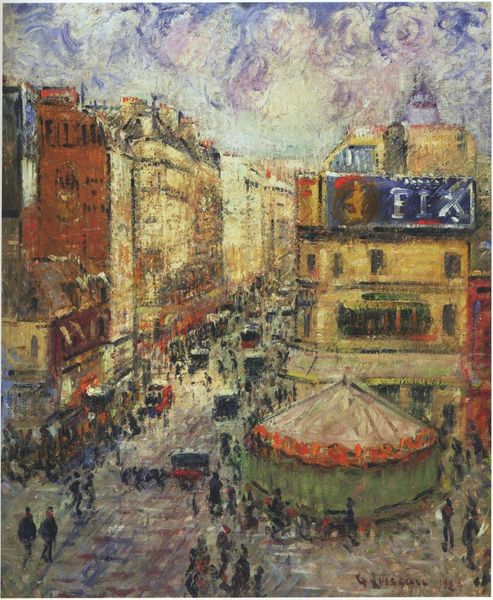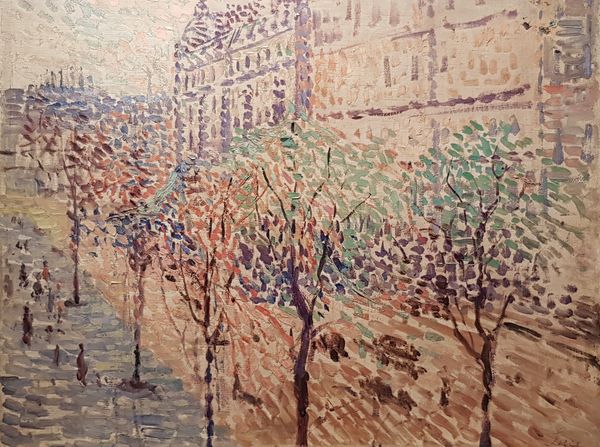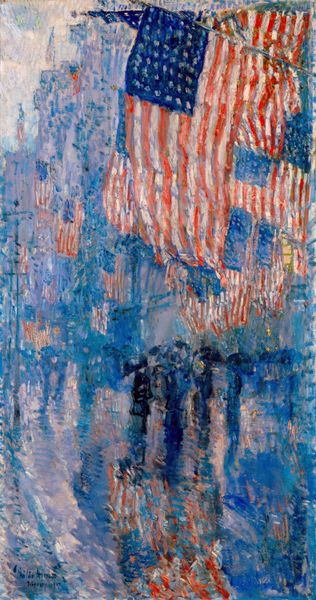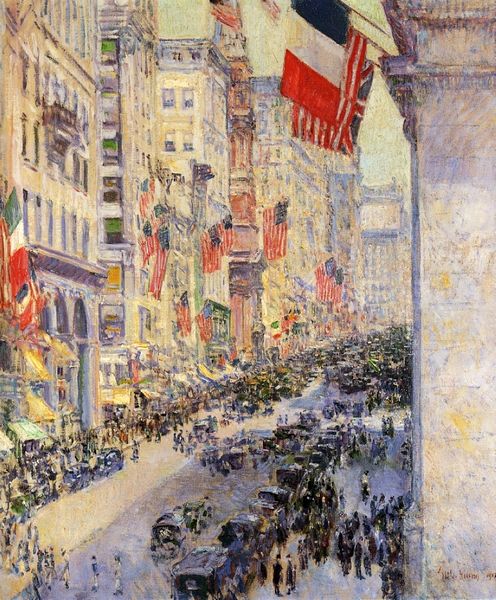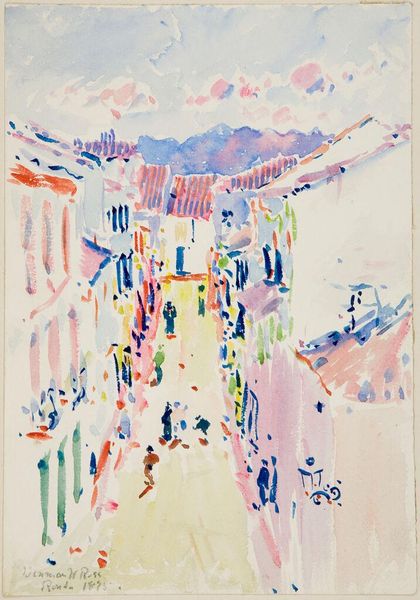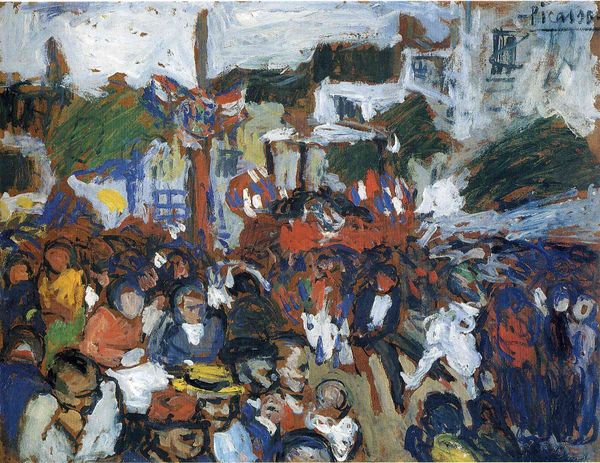
painting, plein-air, oil-paint
#
figurative
#
painting
#
impressionism
#
plein-air
#
oil-paint
#
landscape
#
impressionist landscape
#
figuration
#
oil painting
#
cityscape
Copyright: Public Domain: Artvee
Curator: What a rush of color! Looking at Monet’s “The Rue Montorgueil in Paris. Celebration of June 30, 1878”, I'm immediately struck by the vibrant chaos. It almost feels overwhelming, doesn't it? Editor: It does, and intentionally so, I suspect. Painted in 1878, this oil on canvas captures a specific moment in French history – a celebration marking a national holiday. The scene bursts with French flags, a symbol ripe for interpretation. Curator: Absolutely. The flags are crucial. They’re not just decorative; they’re a visual shorthand for patriotism, for national identity. It's a really striking representation of collective effervescence, that shared emotional experience of a crowd. Editor: Indeed. After the Franco-Prussian War and the Paris Commune, displays of patriotism became important means for rebuilding national unity. Monet’s brushstrokes almost vibrate with energy; it feels like a visceral representation of post-war fervor. Do you get that same sense? Curator: Definitely. And he wasn’t just copying what he saw. Think about his rapid brushwork, those blurred edges – Monet wasn’t trying to create a photorealistic depiction. He wanted to capture the *feeling* of the event. The flags become less about precise details and more about evoking a sense of movement and energy. What's particularly interesting, for me at least, is how that relates to historical memory. These displays are intended to shape not just immediate emotion, but longer-term memory and identification. Editor: That is very true. By rendering the scene in this way, Monet’s commenting on how collective memory and identity are constructed, or perhaps even manipulated. The seemingly spontaneous and free-flowing style actually reflects carefully chosen artistic devices which subtly influenced people at the time of its creation. Curator: It is like Monet captured something so fleeting, a unique experience that transformed into shared understanding and history through art. What do you think endures most about a painting like this? Editor: I'm left thinking about the role of art in shaping, reflecting, or even challenging national narratives. This one captures both raw emotion and a calculated message for posterity. It is really exciting to view it in that new context!
Comments
No comments
Be the first to comment and join the conversation on the ultimate creative platform.
